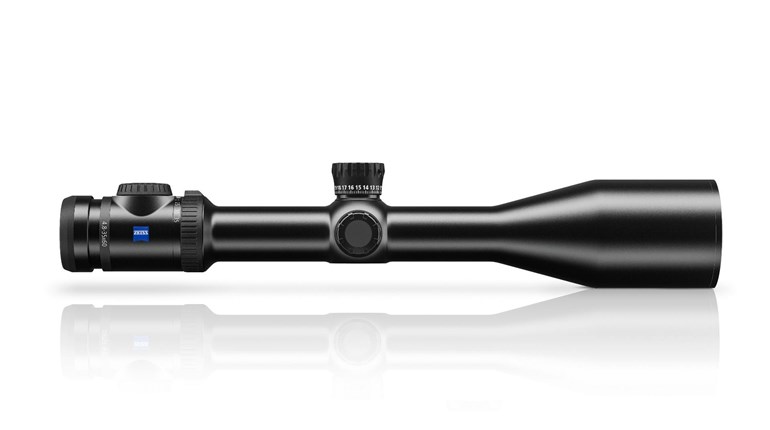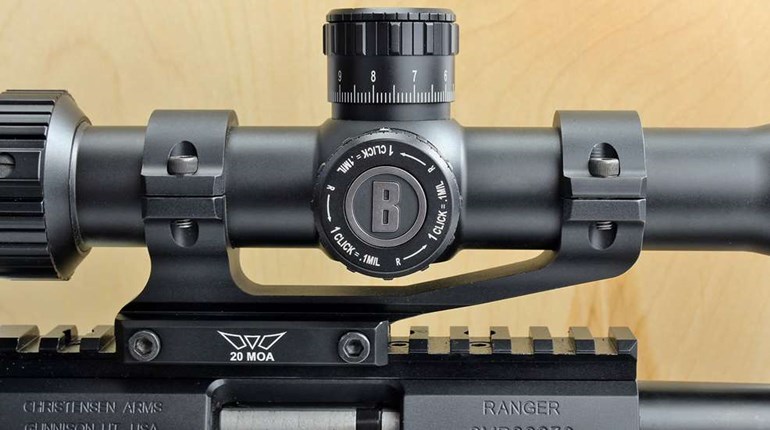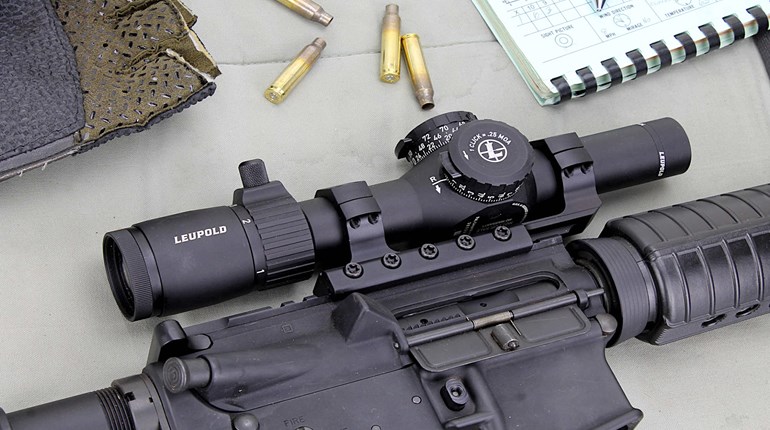
With optics, money really can buy happiness. Most of the time, much of the happiness you pay for comes from the glass proper—the lenses and their coatings. But in the case of the new VX-6HD line of riflescopes from Leupold, you pay for—and get—much more than a clear view of the target. The VX-6HD scopes have prices that bracket $2,000 and come with a host of features, including a 6:1 magnification ratio, which make them worth it. They’re Leupold’s top-of-the-line hunting scopes, and as such represent the company’s latest response to the evolving wants and needs of American hunters.
For example, all VX-6HD scopes have 30mm main tubes. A 30mm main tube permits more room for the erector tube to move inside it, which results in a greater elevation and windage adjustment range. More elevation adjustment is a benefit for the growing cadre of riflemen who take game at long range. A 30mm tube also can be built with a thicker, stronger wall.
The VX-6HD scopes have what Leupold calls High-Definition lenses and the Twilight Max Light Management System. Lenses in the VX-6HD line are specifically designed to correct chromatic aberration, or color fringing, and enhance resolution. In hunter’s terms, this makes a gray-brown deer stand out from a brown-gray background. The Twilight Max Light Management System is a combination of lens coatings and mechanical design features that maximize light transmission across the entire visible spectrum, reduce glare and improve contrast. Two wavelengths, or colors, of light are important for hunters: blue, which the human eye is most sensitive to in low-light conditions, and red, which is the most prevalent in typical hunting situations. The system both maximizes transmission of the light we can most easily see and reduces the light we don’t need, plus balances other colors to provide contrast. Result: bright, crisp views throughout all shooting hours.
Another noticeable feature of the VX-6HD scopes is their exposed, resettable, locking elevation and windage dials. Marked in .25-MOA increments, each has a spring-loaded button on its circumference above the “0” mark. Push the button to unlock the dial and make an adjustment. Return to the zero setting, and the button automatically pops out to lock the dial. The two-tiered CDS-ZL2 elevation dial goes a step further: On the first revolution of adjustment, the button remains flush with the dial edge; on the second, it retreats into its recess. The smart design provides an instant visual and tactile reminder of how much elevation you’ve dialed so you don’t confuse, for example, a 6-MOA correction with a 26-MOA correction.
The central portion of the reticle in all VX-6HD scopes is illuminated. A push-button rheostat controls intensity. The illuminated part of the reticle also serves as a cant indicator: When the scope is tipped to either side more than 1 degree, the reticle flashes.
Leupold includes three bonus features with each VX-6HD: a coupon for a free custom dial marked for the ballistics of your rifle/load, a detachable throw lever for quick magnification changes, and Alumina Flipback lens covers to protect the objective and ocular lenses.
I tested the 3X-18X-50mm model at ranges from 50-300 yards. Windage and elevation adjustments were predictable, and the scope returned to zero no matter how many adjustments I made when dialing for elevation. It held up to the dust, rocks and bumpy roads of Sonora, Mexico, on a weeklong hunt. Though my shot at a Coues deer was only 80 yards, I had seconds to make it. At 3X with the illuminated reticle, the VX-6HD helped me place a lethal bullet quickly. My only complaint is the scope had a rather large eyepiece that crowded the bolt handle when cycling rounds.
Leupold backs the cost of the VX-6HD models with all the features a hunter could want for both short- and long-range shots, plus a full lifetime guarantee. These are well-built scopes that will be at home on any hunt worldwide. Such happiness is worth the price.
Technical Specifications:
• Type: variable-power riflescope
• Magnification: 1X-6X, 2X-12X, 3X-18X (tested), 4X-24X
• Objective Lens Diameter: 24mm, 42mm, 44mm, 50mm (tested), 52mm
• Eye Relief: 3.7" (3X), 3.8" (18X);
• Exit Pupil: 16.7mm (3X), 2.8mm (18X)
• Field of View @ 100 Yds: 38' (3X), 7' (18X)
• Reticle: second focal plane; illuminated FireDot Duplex (tested) w/Motion Sensor Technology and cant indicator
• Adjustments: 75 MOA in .25-MOA incrementsCoatings: fully multi-coated; Twilight Max Light Management System, Guard-Ion
• Dimensions: tube diameter 30mm; length 1.5"; weight 20.4 ozs.
• Construction: one-piece anodized aluminum tube; argon/krypton-filled; waterproof, fog-proof, shockproof; side-mounted parallax adjustment and push-button illumination control
• Accessories: Alumina Flipback lens covers, reversible throw lever, coupon for free CDS dial
• MSRP: $2,209


































